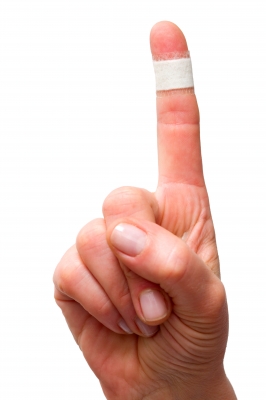Yellow jackets are one of the most well-known stingers around. Although these creatures have yellow and black colorations like bees, yellow jackets can easily be distinguished from bees because of their thin waist; and, they are less hairy and bigger too. Most yellow jackets are about an inch long, with extended wings that are almost as long as their bodies. These insects are social organisms. A colony can contain hundreds to thousands of creatures, and they prefer to build their nests under the ground.

Yellow jackets are actually beneficial to the environment as they help to pollinate plants. However, they can become very aggressive, especially when they perceive threats or when they believe that their nests are being attacked. Plus, unlike the bee which can only sting once, a yellow jacket can deliver multiple stings.
Taking Care of a Yellow Jacket Sting
Anaphylactic Reaction
If you or someone you know gets stung by a yellow jacket, the aim is to relieve pain and itching, which are the two most common signs. However, if a person exhibits severe allergic reactions, also known as anaphylactic reaction, bring him to a hospital as soon as possible. Some of the symptoms of a serious reaction include: difficulty of breathing, difficulty swallowing, chest tightness, slurred or garbled speech, changes in perception or confusion, fainting and weakness. Emergency care must be given, and this often involves the administration of antihistamines or epinephrine. In acute cases, CPR (cardiopulmonary resuscitation) is administered to those who stop breathing.
Typical Reaction
If you’re not allergic to the sting of a yellow jacket, then you can be treated at home. First, clean the site with a gentle soap and running water. You can also clean the area with peroxide. If you don’t have access to running water, disinfect the stung area using alcohol. Second, remove the stinger. Do not squeeze it out because you’ll only cause more venom to be released. What you should do is get something flat and firm, like a dull knife. You can use this to scrape the stinger. Third, know what to expect. For instance, there will be severe pain, and it could last for an hour or two. Itching typically follows, and then there will be swelling and redness. But the circumference of the swollen area should not get bigger than 2 inches. If the site continues to puff out, seek medical help. The stung area will be swollen for about a week, while the redness only lasts for about 3 days. Treatment will depend on the symptoms.
Simple Remedies
Relieve Pain and Swelling
The easiest way to reduce pain and swelling is to apply ice pack on the affected site. The cold compress should be kept on the area for at least 15 minutes. There are also over-the-counter medications that can help reduce pain and swelling, such as ibuprofen, which is an anti-inflammatory agent. Hydrocortisone creams can also help reduce swelling and itching, while antihistamines help to ease swelling too.
Ease Itching
Yellow jacket stings can be pretty itchy. You can apply a thin layer of hydrocortisone cream on the site. If you have apple cider vinegar or any type of vinegar around, you can also use this to alleviate itchiness.
Draw Venom Out
You can also help draw out venom by applying certain things on the site. For example, some people recommend the application of salt pastes or mudpacks to remove the venom from the yellow jacket’s sting.
Citations:
- Photo courtesy of Ambro at www.freedigitalphotos.net.
Claire Clarke writes for pest control companies, and she blogs for a Boston exterminator too. She contributes articles about pest management and provides tips regarding how to keep pests away.

